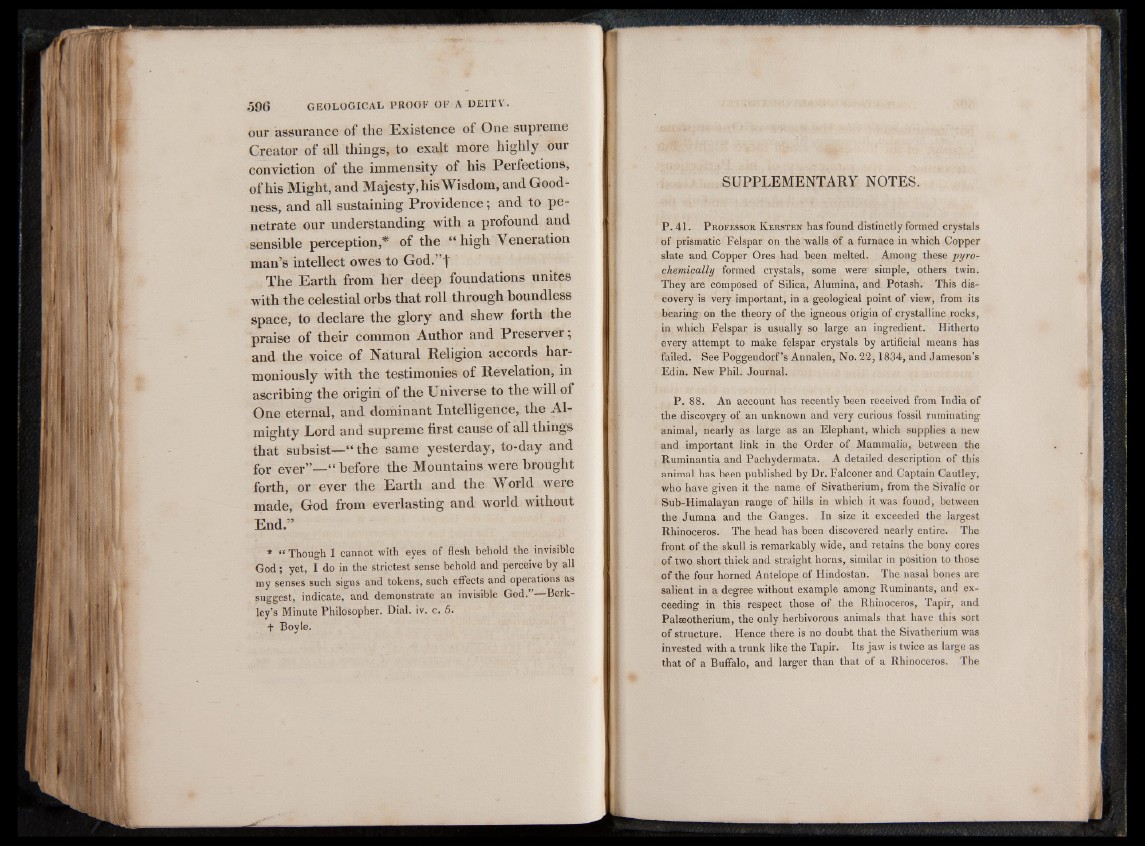
our assurance o f the E x isten ce o f One supreme
Creator o f all things, to exalt more highly our
conviction of the immensity o f his Perfections,
o f his Might, and Majesty, his Wisdom, and G oodness,
and all sustaining P ro v id en c e ; and to p e netrate
our understanding with a profound and
sensible perception,* o f the “ high Veneration
man’s intellect owes to God.”|
The Earth from her deep foundations unites
with the celestial orbs that roll through boundless
space, to declare the glory and shew forth the
praise o f their common Author and Pre serv e r;
and the voice o f Natural Religion accords harmoniously
with the testimonies o f Revelation, in
ascribing the origin o f the Universe to the will o f
One eternal, and dominant Intelligence, the A lmighty
Lord and supreme first cause o f all things
that subsist—“ the same yesterday, to-day and
for ever”—“ before the Mountains were brought
forth, or ever the Earth and the World were
made, God from everlasting and world without
E n d .”
* “ Though I cannot with eyes of flesh behold the invisible
God; yet, I do in the strictest sense behold and perceive by all
my senses such signs and tokens, such effects and operations as
suggest, indicate, and demonstrate an invisible God.”— Berkley’s
Minute Philosopher. Dial. iv. c. 5.
+ Boyle.
SUPPLEMENTARY NOTES.
P. 41. P rofessor K ersten has found distinctly formed crystals
of prismatic Felspar on the walls of a furnace in which Copper
slate and Copper Ores had been melted. Among these pyro-
chemically formed crystals, some were' simple, others twin.
They are composed of Silica, Alumina, and Potash. This discovery
is very important, in a geological point of view, from its
bearing on the theory of the igneous origin of crystalline rocks,
in which Felspar is usually so large an ingredient. Hitherto
every attempt to make felspar crystals by artificial means has
failed. See Poggendorf’s Annalen, No. 22,1834, and Jameson’s
Edin. New Phil. Journal.
P. 88. An account has recently been received from India of
the discovery of an unknown and very curious fossil ruminating
animal, nearly as large as an Elephant, which supplies a new
and important link in the Order of Mammalia, between the
Ruminantia and Pachydermata. A detailed description of this
animal has been published by Dr. Falconer and Captain Cautley,
who have given it the name of Sivatherium, from the Sivalic or
Sub-Himalayan range of hills in which it was found, between
the Jumna and the Ganges. In size it exceeded the largest
Rhinoceros. The head has been discovered nearly entire. The
front of the skull is remarkably wide, and retains the bony cores
of two short thick and straight horns, similar in position to those
of the four horned Antelope of Hindostan. The nasal bones are
salient in a degree without example among Ruminants, and exceeding
in this respect those of the Rhinoceros, Tapir, and
Palseotherium, the only herbivorous animals that have this sort
of structure. Hence there is no doubt that the Sivatherium was
invested with a trunk like the Tapir. Its jaw is twice as large as
that of a Buffalo, and larger than that of a Rhinoceros. The